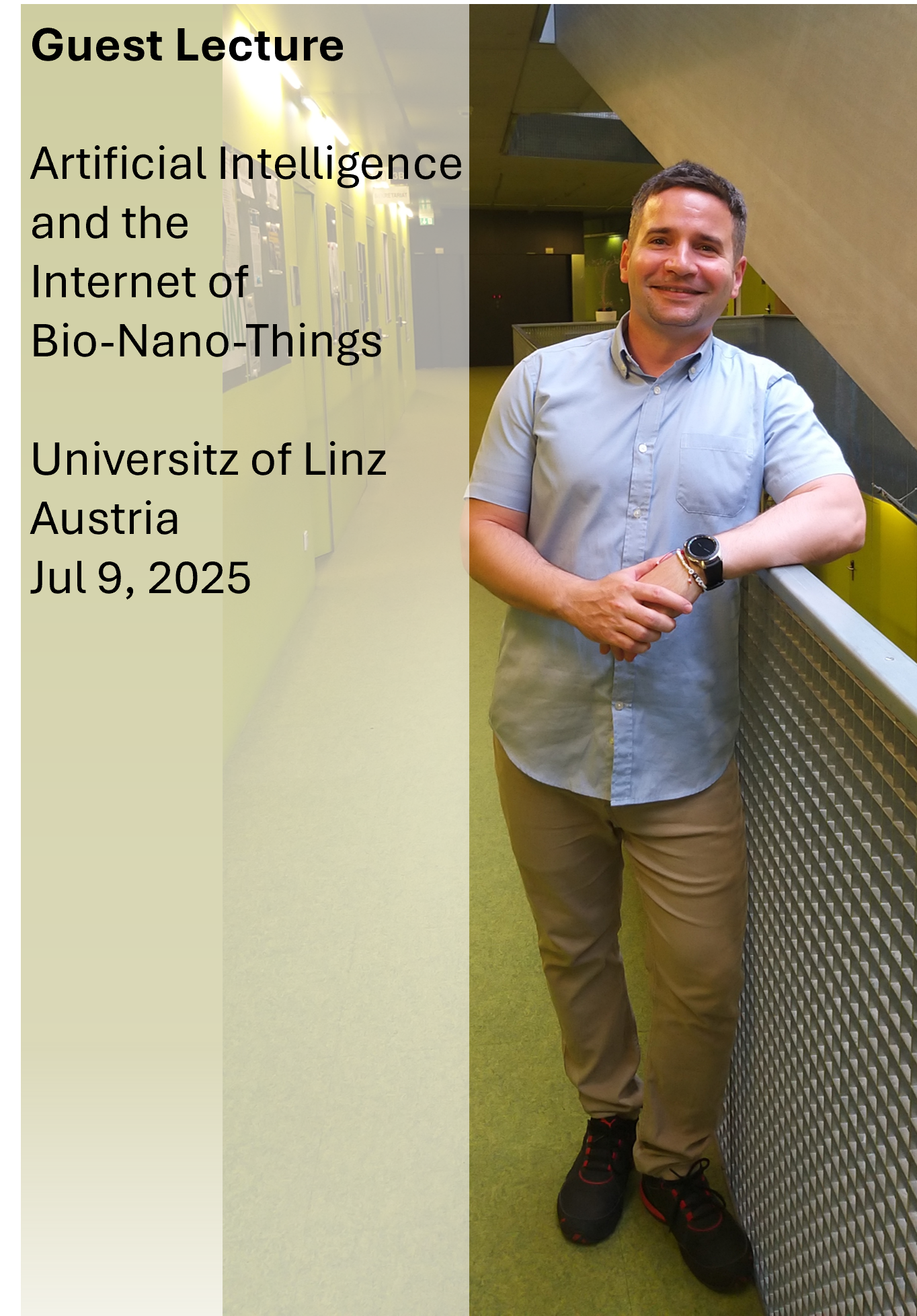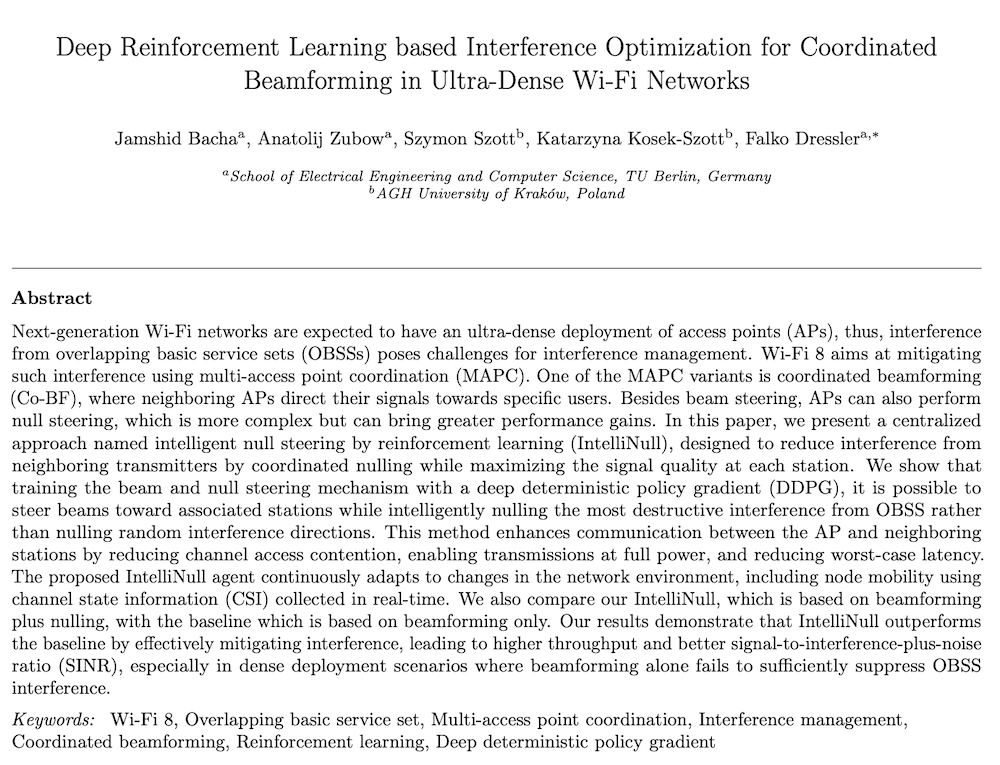Literature Database Entry
duda2018bats
Niklas Duda, Thorsten Nowak, Markus Hartmann, Michael Schadhauser, Björn Cassens, Peter Wägemann, Muhammad Nabeel, Simon P. Ripperger, Sebastian Herbst, Klaus Meyer-Wegener, Frieder Mayer, Falko Dressler, Wolfgang Schröder-Preikschat, Rüdiger Kapitza, Jörg Robert, Jörn Thielecke, Robert Weigel and Alexander Kölpin, "BATS: Adaptive Ultra Low Power Sensor Network for Animal Tracking," MDPI Sensors, vol. 18 (10), pp. 3342–35, October 2018.
Abstract
In this paper, the BATS project is presented which aims to track the behavior of bats via an ultra-low power wireless sensor network. An overview about the whole project and its parts like sensor node design, tracking grid and software infrastructure is given and the evaluation of the project is shown. The BATS project includes a lightweight sensor node that is attached to bats and combines multiple features. Communication among sensor nodes allows tracking of bat encounters. Flight trajectories of individual tagged bats can be recorded at high spatial and temporal resolution by a ground node grid. To increase the communication range the BATS project implemented a long-range telemetry system to still receive sensor data outside the standard ground node network. The whole system is designed with the common goal of ultra-low energy consumption while still maintaining optimal measurement results. To this end, the system is designed in a flexible way and is able to adapt its functionality according to the current situation. In this way it uses the energy available on the sensor node as efficient as possible.
Quick access
Original Version ![]() (at publishers web site)
(at publishers web site)
Authors' Version ![]() (PDF on this web site)
(PDF on this web site)
BibTeX ![]()
Contact
Niklas Duda
Thorsten Nowak
Markus Hartmann
Michael Schadhauser
Björn Cassens
Peter Wägemann
Muhammad Nabeel
Simon P. Ripperger
Sebastian Herbst
Klaus Meyer-Wegener
Frieder Mayer
Falko Dressler
Wolfgang Schröder-Preikschat
Rüdiger Kapitza
Jörg Robert
Jörn Thielecke
Robert Weigel
Alexander Kölpin
BibTeX reference
@article{duda2018bats,
author = {Duda, Niklas and Nowak, Thorsten and Hartmann, Markus and Schadhauser, Michael and Cassens, Bj{\"{o}}rn and W{\"{a}}gemann, Peter and Nabeel, Muhammad and Ripperger, Simon P. and Herbst, Sebastian and Meyer-Wegener, Klaus and Mayer, Frieder and Dressler, Falko and Schr{\"{o}}der-Preikschat, Wolfgang and Kapitza, R{\"{u}}diger and Robert, J{\"{o}}rg and Thielecke, J{\"{o}}rn and Weigel, Robert and K{\"{o}}lpin, Alexander},
doi = {10.3390/s18103343},
title = {{BATS: Adaptive Ultra Low Power Sensor Network for Animal Tracking}},
pages = {3342--35},
journal = {MDPI Sensors},
issn = {1424-8220},
publisher = {MDPI},
month = {10},
number = {10},
volume = {18},
year = {2018},
}
Copyright notice
Links to final or draft versions of papers are presented here to ensure timely dissemination of scholarly and technical work. Copyright and all rights therein are retained by authors or by other copyright holders. All persons copying this information are expected to adhere to the terms and constraints invoked by each author's copyright. In most cases, these works may not be reposted or distributed for commercial purposes without the explicit permission of the copyright holder.
The following applies to all papers listed above that have IEEE copyrights: Personal use of this material is permitted. However, permission to reprint/republish this material for advertising or promotional purposes or for creating new collective works for resale or redistribution to servers or lists, or to reuse any copyrighted component of this work in other works must be obtained from the IEEE.
The following applies to all papers listed above that are in submission to IEEE conference/workshop proceedings or journals: This work has been submitted to the IEEE for possible publication. Copyright may be transferred without notice, after which this version may no longer be accessible.
The following applies to all papers listed above that have ACM copyrights: ACM COPYRIGHT NOTICE. Permission to make digital or hard copies of part or all of this work for personal or classroom use is granted without fee provided that copies are not made or distributed for profit or commercial advantage and that copies bear this notice and the full citation on the first page. Copyrights for components of this work owned by others than ACM must be honored. Abstracting with credit is permitted. To copy otherwise, to republish, to post on servers, or to redistribute to lists, requires prior specific permission and/or a fee. Request permissions from Publications Dept., ACM, Inc., fax +1 (212) 869-0481, or permissions@acm.org.
The following applies to all SpringerLink papers listed above that have Springer Science+Business Media copyrights: The original publication is available at www.springerlink.com.
This page was automatically generated using BibDB and bib2web.







